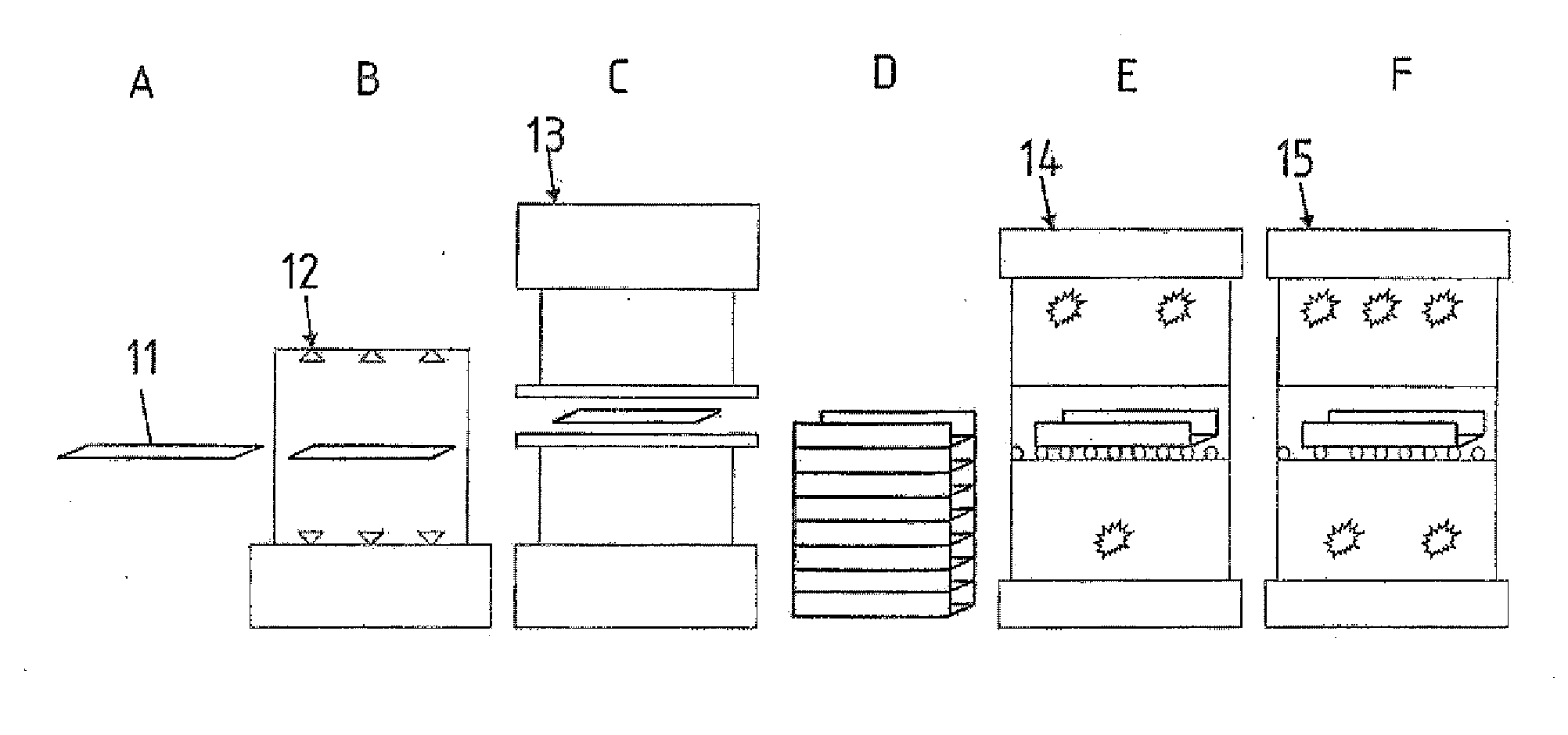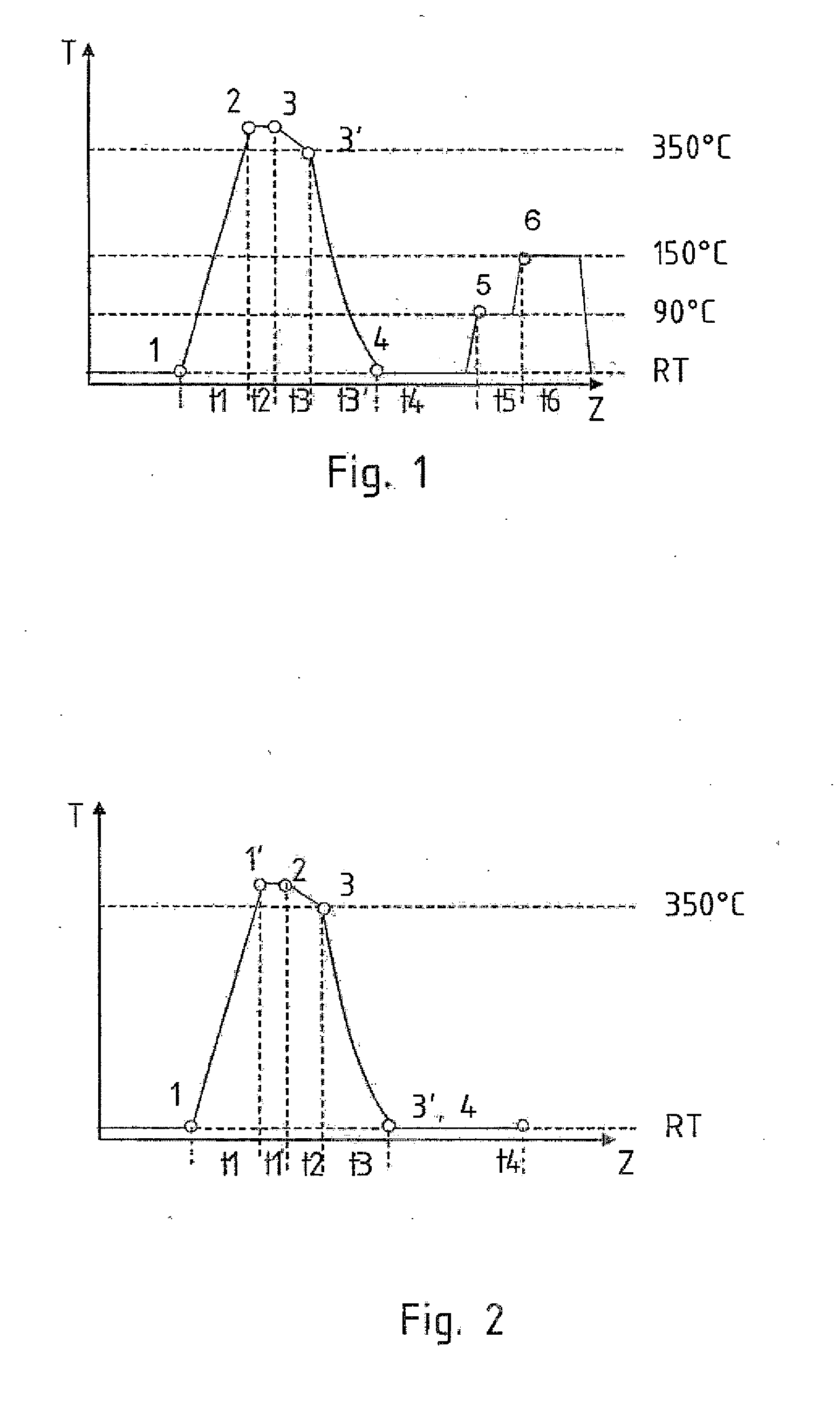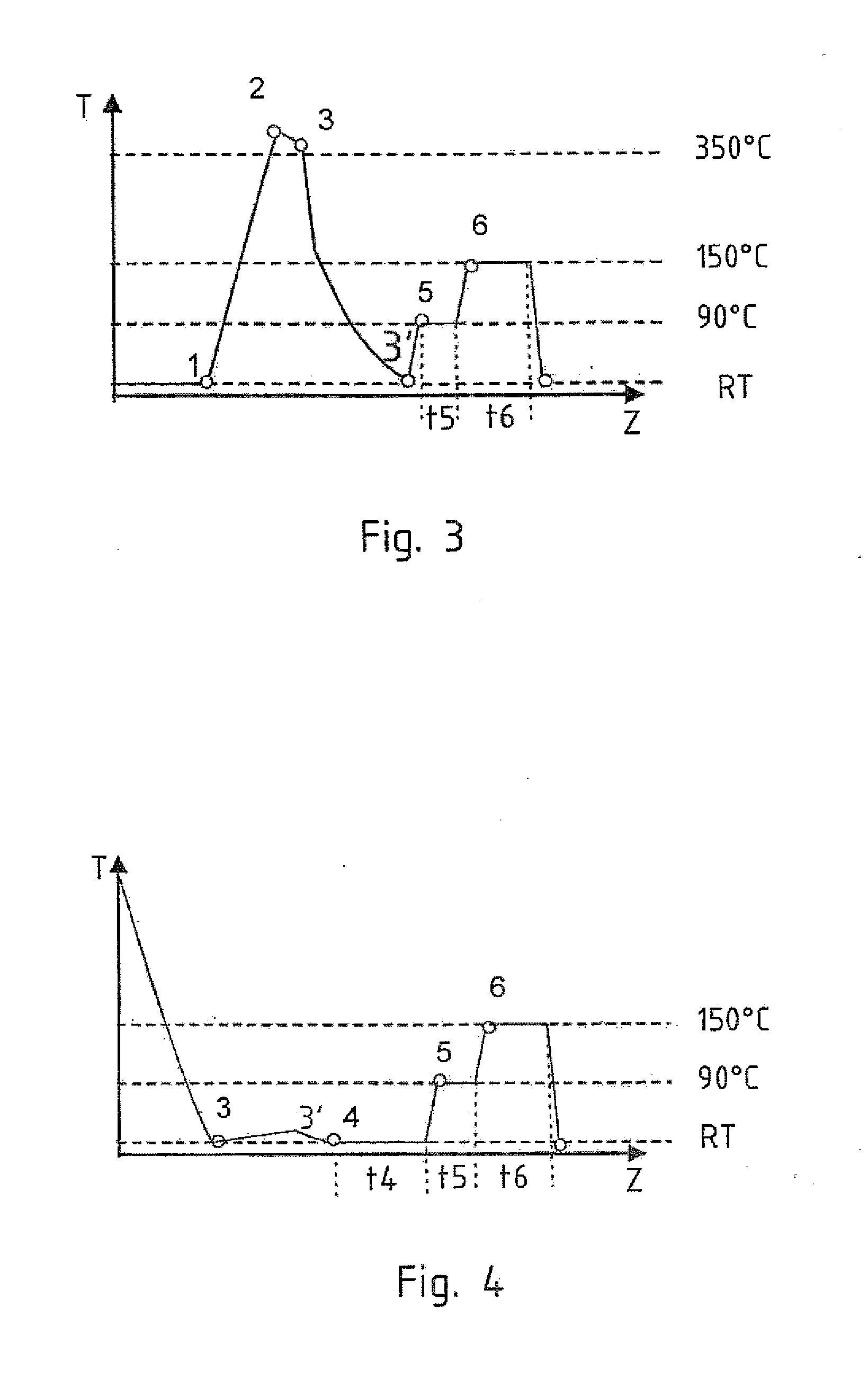Method for producing a structural sheet metal component, and a structural sheet metal component
a technology of structural sheet metal and component, which is applied in the direction of shaping tools, induction heating, induction heating apparatus, etc., can solve the problems of correspondingly diminishing mechanical strength values of components, and achieve the effect of increasing hardness and strength of alloys, increasing the yield strength of metals, and increasing the strength of hardenable aluminum alloys
- Summary
- Abstract
- Description
- Claims
- Application Information
AI Technical Summary
Benefits of technology
Problems solved by technology
Method used
Image
Examples
fourth embodiment
[0047]FIG. 4 shows the method according to the invention, wherein the sheet metal blank is formed at room temperature RT after being heated to a heating temperature and subsequently cooled. A marginal temperature increase caused by forming is observed between the forming start 3 and to forming end 3′. After termination of the forming, natural aging 4 begins, which is held for a duration t4. Heating to a first step for tempering 5 follows the natural aging, wherein after reaching a first temperature for tempering for a duration t5, the first step of tempering is held constant. Thereafter, heating takes place to a second stage for tempering 6, wherein the second temperature for tempering is once more held constant for a duration t6. When the second stage of tempering is terminated, cooling or quenching to room temperature RT takes place.
fifth embodiment
[0048]FIG. 5 shows the method according to the invention which is configured similar to FIG. 4; however, natural aging after termination of forming 3′ is eliminated and tempering takes place.
[0049]FIG. 6 compares the attained mechanical strength characteristics of different aluminum alloys. The yield strength is illustrated on the left scale in mega-Pascal and the elongation at break A50 on the right scale in percent. Compared are sheet metal blanks in the states T6 (A) and T4 (B), each showing a corresponding yield strength and elongation at break. A blank (C) after termination of the method of the invention according to FIG. 1 and a blank (D) which was only naturally aged for 4 weeks are shown on the opposite side of FIG. 6. As can be seen, the yield strength is approximately identical to the initial states T6 (A) or T4 (B) when the method of the invention is used. Compared to a four-week natural aging process (D) the yield strength exceeds almost 3 times the adjusted yield streng...
PUM
| Property | Measurement | Unit |
|---|---|---|
| Temperature | aaaaa | aaaaa |
| Temperature | aaaaa | aaaaa |
| Temperature | aaaaa | aaaaa |
Abstract
Description
Claims
Application Information
 Login to View More
Login to View More - R&D
- Intellectual Property
- Life Sciences
- Materials
- Tech Scout
- Unparalleled Data Quality
- Higher Quality Content
- 60% Fewer Hallucinations
Browse by: Latest US Patents, China's latest patents, Technical Efficacy Thesaurus, Application Domain, Technology Topic, Popular Technical Reports.
© 2025 PatSnap. All rights reserved.Legal|Privacy policy|Modern Slavery Act Transparency Statement|Sitemap|About US| Contact US: help@patsnap.com



